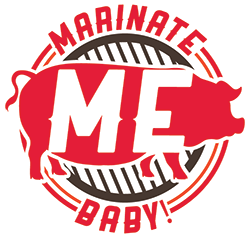How to Clean and Season a Cast-Iron Pan
I love cooking in cast iron. I mean what’s not to love right? I love cast iron for its exceptional heat retention, it’s natural nonstick surface, and it’s unbeatable durability and value. I know that cast iron is virtually indestructible and can be easily restored if it has a bad owner. Plus, a great skillet can be obtained for under $50 and if you treat it right, you can pass it on.
I like to use the analogy that caring for a cast-iron skillet is like caring for your car. If you service it regularly and it will last you for a very long time; you can use it hard or neglect it and it will need some TLC. My care guidelines will bring your skillet back to it’s old glory, no matter what condition it is currently in.
How to Clean a Cast-Iron Pan
This the very best way to care and maintain a cast-iron pan that’s in a relatively good shape.
-
Clean your cast-iron after every use
Wipe the interior surface while it’s still warm with paper towels to remove off the excess food and oil. Rinse the pan under hot running water, scrubbing with a non-metal brush or a non-abrasive scrub pad to remove the food.2. Lightly Oil After Cleaning
-
Lightly oil after cleaning
Dry your skillet completely, then place it over a medium-low heat until all the moisture has been evaporated. Then add 1/2 teaspoon of oil or grease to the pan by applying it with paper towels. Lightly coat the interior surface with the oil. Continue until the surface looks dark and smooth and no oil residue remains. Allow the pan to cool completely.
How to Season a Cast-Iron Pan Properly
Have you inherited or purchased an old cast-iron skill that is looking in need of some TLC to get it’s seasoning back to work properly? Here are my steps if your cast-iron needs some minor service.
-
Stovetop Method
Place the skillet over medium-high heat. Use paper towels that have been dipped in 2 tablespoons of oil or grease and while using tongs, wipe the surface until you see it smoking and there is no more remaining residue from the oil/grease. Repeat this process at least 3 to 5 times, while making sure the oil smokes and let the skillet cool slightly after each application.
-
Oven Method
Prepare your oven by heating to 500°F. Use paper towels, begin to rub 2 tablespoons of oil/grease over the surface of your cast-iron pan. Using a clean paper towel, wipe out the excess oil. The surface should look dark and smooth. Place the cast-iron pan in the oven and allow to heat for 1 hour. Using hot pads, remove the cast-iron from the oven and allow to cool completely.
How do you Remove Rust from a Cast-Iron Pan
Cast-Iron Skillets can over the lifetime of use need a touch up on its seasoning. However, from time to time pans can get very dull or damaged and sometimes rusts badly (no, it can’t be just scrubbed away), you will need to follow these steps to give a proper overhaul.
-
Stripping A Cast-Iron Pan
You may need to breathe new life into your cast-iron pan that may have fallen into disrepair, you can start by stripping the surface (and then you need to reseason it). Once the skillet’s seasoning has been stripped, I would follow the oven method above, repeat the process at least six times or until the skillet has become dark and has a smooth finish.
What is Seasoning?
That’s a very good question. By now you have heard me use that word three or four times now, and if you have just purchased your first cast-iron product you might be pondering that questions. What is Seasoning? When fat or cooking oil is heated to its smoking point in your cast-iron, the fatty acids oxidize and start to reorganize into a new plastic-type layer of molecules. This layer traps itself within the pitted surface of the cast-iron pan and adheres itself to the metal, thus creating the slick coating known as ‘seasoning”. When you repeat exposure to this method repeatedly you continue to build a stronger, more slippery and durable. That’s why even though you might have purchased a cast-iron product that has titled itself as ‘factory seasoned”, you will still want to do these steps to make your new cast-iron more non-stick with repeated use.
What Should you Use to Season?
The best is polyunsaturated fat. The more readily you use it, it will oxidize and polymerize. I love bacon grease. However, you can use flaxseed, soybean and sunflower oils work just fine. I would just stay clear of vegetable oils as they leave a more sticky residue.
How to Test If Your Cast-Iron is Seasoned?
A well-seasoned cast-iron pan will have a dark, semi-gloss finish and won’t have a sticky or greasy touch. It will also not have any rust or dull or dry patches.


